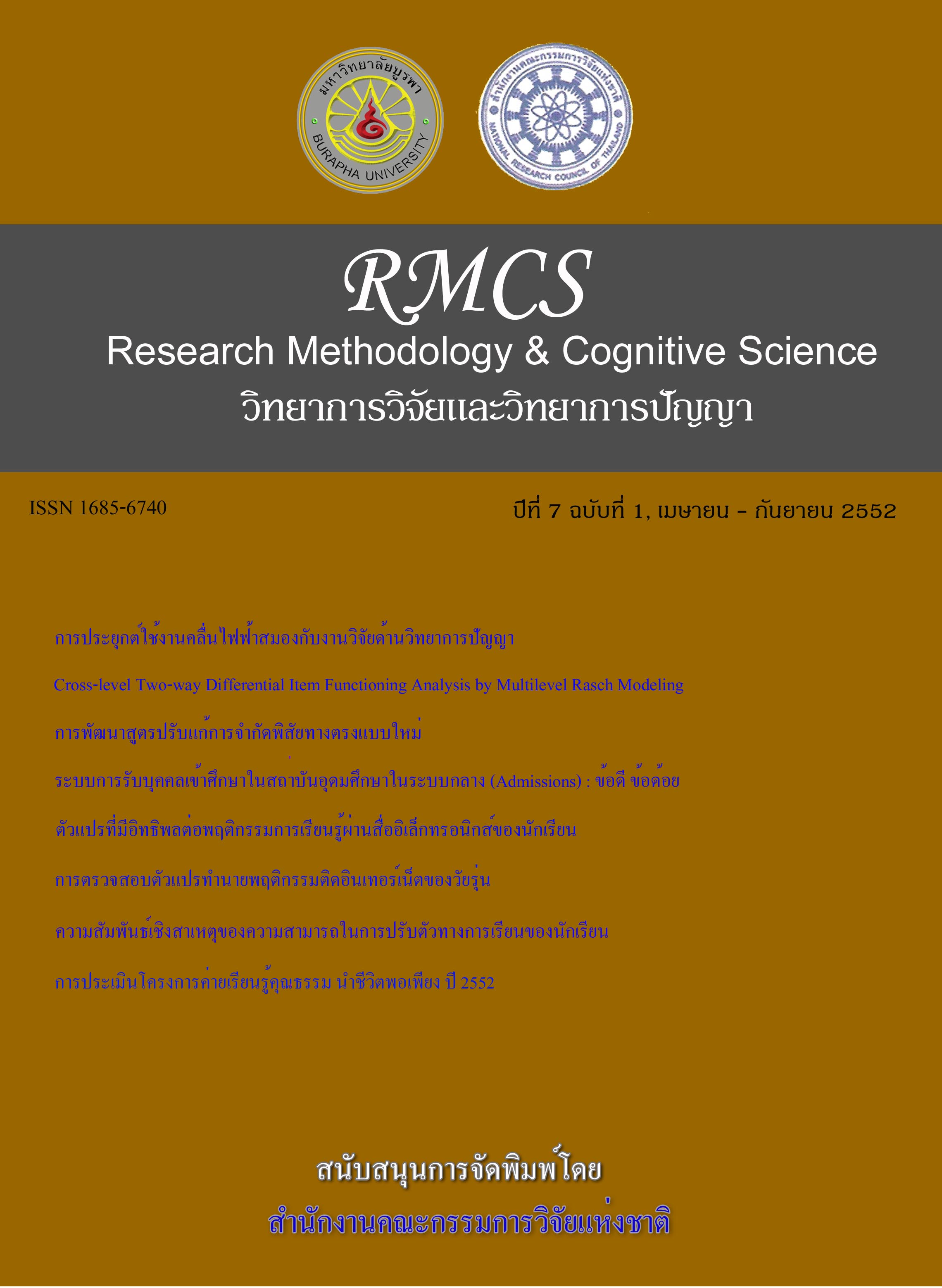Variables Effecting the E-Learning Behavior of High School Students in Thailand
Main Article Content
Abstract
The goal of this research was to develop causal relationship models for the e-Learning behavior of Thai high school students, when taken as an overall cohort, and when separated by geographic region. The conceptual model was composed of twenty observed variables and seven latent variables; 1,600 high school students were selected for the study using multistage random sampling. Research instruments included a questionnaire having six scales and a total of 171 items, validated by three experts. The construct validity of each latent variable was assessed by using confirmatory factor analysis, with construct reliabilities lying between 0.50 – 0.87. Data were collected in the second semester of the 2008 academic year. Causal พelationship models were determined by path analysis using LISREL 8.72. It was found that the models for e-Learning behavior of high school students highly fitted the empirical data for the overall cohort, and also for the geographic subgroups. The causa variables in the model explained the variance in behavior at levels of 45.7%, 72.4%, 93.0%, 48.0% and 28.8% for the overall model and for four subgroup models: the central, the north, the northeast and the south, respectively. In the overall model the most influential variable was family, followed by ability, school, characteristics, friend and teacher, with coefficients of 0.462, 0.224, 0.221, 0.153, 0.130 and 0.077, respectively. Family was the most influential variable in two subgroup models: the central and the south, respective coefficients were 0.560 and 0.268. Ability was the most influential variable in two other subgroup models: the north and the northeast, with coefficients of 1.088 and 0.838, respectively

